Freedom of Expression and Photography: A Powerful Alliance
Photography, much more than a simple visual art, is a striking testimony to our world. It transcends linguistic and cultural boundaries to show us the raw reality of everyday life. In this article, we will explore the deep connection between freedom of expression and photography, highlighting how this visual art form has the power to capture moments of truth, resistance and reflection.
Photography is often considered a window on the world. It allows viewers to see and feel emotions, events and stories that transcend words. It is an art form that goes beyond simple aesthetics to become a powerful means of communication.
In this article, we will explore various examples of historically significant photographs that illustrate the crucial role of photography in defending freedom of expression. Among these examples, we will mention "Tank Man" by Jeff Widener, "The Immolation of Thich Quang Duc" by Malcom Browne, "D Day (1944)" by Robert Capa, and many others.
Each photograph tells a story, highlights an injustice or encourages reflection. Together, they demonstrate the power of photography as a tool for social change and awareness. In upcoming parts of this article, we'll dive deeper into these fascinating examples and examine how photography has been used to raise voices, denounce atrocities, and inspire movements for change.
Stay with us for a journey through the lens of the camera, where freedom of expression is expressed with dazzling clarity.
Photography: A Universal Language
Photography transcends barriers of language and culture. It speaks to the heart and soul of each of us. When words fail to express the depth of an emotion or the impact of an event, photography bridges the gap by capturing the moment in an unforgettable way.
Communication is at the heart of freedom of expression. The art of photography, with its power of visual storytelling, offers a universal means of communication. No matter where you are in the world, a well-shot photograph can convey a story, stir emotions, and evoke a response.
In future parts of this article, we will explore how photography has been used to document historical moments, social movements and acts of resistance. Each image tells a unique story that has had a significant impact on the way we perceive the world around us.
Photography is not only a form of visual art, it is also a powerful language. She can express ideas, values and demands clearly and concisely. It can give a voice to the voiceless and shine a light on issues that are often ignored.
In the following parts of this article, we will delve into the details of some of the most prominent examples of photographs that have played a crucial role in defending free speech. These iconic images have become symbols of resistance, humanity and truth.
Photography, as a universal visual language, reminds us that freedom of expression goes beyond words. It manifests itself through the images that remain engraved in our memories, encouraging us to think, to act and to defend the fundamental principles of democracy.
The Faces of Freedom of Expression
Freedom of expression manifests itself in many ways, and photography offers a range of means to assert it. Photographers from around the world have seized the opportunity to document the events that shape our history, from silent protest to heroic act. These faces of free speech are etched into the camera lens, a testament to the endurance and resilience of the human spirit.
Freedom of expression is not limited to a single form of communication. It takes many forms, from writing to visual art to photography. Photographers have played a vital role in defending this freedom by documenting the events that shaped our world.
In the coming sections of this article, we will take a close look at some of these faces of free speech. We'll discover how intrepid photographers captured moments of protest, revolt, sacrifice and hope. Their images remind us that photography is much more than just aesthetics; it is a powerful weapon for denouncing injustice and expressing the truth.
Among these faces of free speech, we'll explore Jeff Widener's "Tank Man," a lone man confronting a column of tanks in Beijing, and "The Immolation of Thich Quang Duc" by Malcom Browne, who documented the sacrifice final action by a Buddhist monk to protest the Vietnam War. We will also return to “D Day (1944)” by Robert Capa, an emblematic photograph of the Allied landings in Normandy.
These faces of free expression embody the resilience and perseverance of the human spirit in the darkest of times. They remind us that photography is a powerful way to convey messages, tell stories and inspire change.
Photography: Witness to History
Photography has the power to freeze history in an instant. Each shot becomes a time capsule, forever preserving a precise moment. As a silent witness to world events, photography documents humanity in all its complexity, from joy to pain, from victory to defeat.
One of the most fascinating characteristics of photography is its ability to freeze history in an instant. Each photograph becomes a time capsule, forever preserving a specific moment in human history. As a silent witness to world events, photography documents the full range of human emotions, from moments of joy and triumph to moments of pain and despair.
In the next sections of this article, we will explore how photography has been used to document some of the most momentous events in history. We'll look at photos that not only captured moments, but also left an indelible mark on the collective consciousness.
Among these iconic photographs, we will return to “Tank Man” by Jeff Widener, an image that symbolizes individual courage in the face of government repression. We will also discuss "The Imolation of Thich Quang Duc" by Malcom Browne, a photograph that shocked the world by showing the sacrifice of a monk to protest against the war. Finally, we will explore Robert Capa's "D Day (1944)", a picture that immortalized the Allied landings in Normandy.
These photographs, although taken decades ago, continue to have a profound impact on our understanding of history and the human condition. They remind us that photography is much more than just a visual art; it is an essential form of documentation that allows us to preserve the collective memory of our ever-changing world.
Photography as a Witness to Demonstrations
Protests are a powerful way for citizens to make their voices heard and defend their rights. Photography played a vital role in documenting these social movements and showing the world the faces of protest.
Protests are an essential part of democracy. They allow citizens to make their voices heard, defend their rights and demand change. However, these gatherings would not be complete without the visual testimony of photography. Photography played a vital role in documenting these social movements and showing the world the faces of protest.
In this first section, we will explore how photography has been a privileged witness to protests throughout history. We'll look at iconic photographs that captured the essence of protest, from the fight for civil rights to movements for social justice.
We will discuss examples such as "Tank Man" by Jeff Widener, who immortalized the courage of a lone man facing a column of tanks in Beijing during the Tian'anmen Square protests in 1989. This photograph has become a symbol of peaceful resistance against oppression.
We'll also look at "The Imolation of Thich Quang Duc" by Malcom Browne, who documented the harrowing moment a Buddhist monk set himself on fire to protest the Vietnam War. This image shocked the world and drew attention to the conflict.
Finally, we'll delve into Robert Capa's "D Day (1944)," which captured the chaos and bravery of Allied soldiers during the Normandy landings during World War II. This black and white photograph has become a symbol of the joint effort of nations to end the conflict.
These examples highlight the crucial role of photography in documenting protests and social movements. Photography goes beyond simple illustration; it allows us to transmit the emotions, issues and ideals that animate these moments of change and commitment.
Wartime Photography: Witness and Legacy
War photography has a unique power: it bears witness to the horrors of war while paying tribute to the courage of those who faced it. Intrepid photographers risk their lives to capture the devastating impact of armed conflict, creating images that will forever be etched in collective memory.
War is one of the most devastating events in human history, and photography has played a crucial role in documenting these dark times. War photographers, often at the risk of their lives, have captured the devastating impact of armed conflict and created images that will remain forever etched in collective memory.
In this section we will explore how photography was used as a witness to war. We'll talk about intrepid photographers like Robert Capa, Eddie Adams and Nick Ut, who risked their lives to document the conflicts of the 20th century.
We'll look at iconic photographs such as Robert Capa's "D Day (1944)", which captured the Allied landings in Normandy during World War II. This image, taken in the tumult of battle, captures the brutality and courage of the soldiers.
We will also examine "The Execution of Nguyễn Văn Lém" by Eddie Adams, a photograph that shocked the world by showing the summary execution of a member of the Viet Cong during the Vietnam War. This image had a major impact on public opinion and helped change perceptions of the war.
Finally, we will discuss “The Napalm Girl” by Nick Ut, a photograph that documented the tragedy of a Vietnamese girl burned by napalm. This image was a powerful plea against the horrors of war.
These photographs not only document the horrors of war, they also pay tribute to the courage and resilience of the people who faced it. They are a poignant reminder of the impact photography can have in telling stories of suffering, sacrifice and survival.
Photography and History: Capturing the Essence of an Era
Photography has the unique ability to freeze a moment in time, preserving history for future generations. It allows us to travel into the past, discover ancient cultures and better understand our own history.
Photography is a powerful way to document history. It has the unique ability to freeze a moment in time, preserving the essence of an era for future generations. By looking through photographic archives, we can travel into the past, discover ancient cultures, and better understand our own history.
In this section, we will explore how photography has been an essential instrument for documenting history. We will discuss iconic historical photographs that have helped shape our understanding of the world.
We'll talk about photographs such as Dorothea Lange's "Migrant Mother," which captured the misery of the Great Depression in the United States and became a symbol of this dark period in American history.
We will also discuss Robert Doisneau's "The Kiss of the Town Hall", an iconic photograph of Parisian life in the 1950s, symbolizing love and romance.
Finally, we will discuss "The Earth seen from Space" by William Anders, an image taken from the Moon during the Apollo 8 mission in 1968. This photograph changed our perception of the Earth as a fragile planet and contributed to the environmental movement.
These photographs not only document historical events, they also capture the emotion and humanity surrounding them. They allow us to better understand our past, celebrate our achievements and reflect on the challenges we have overcome.
Photography and Social Testimony: Exposing Injustice
Photography has been a powerful tool for highlighting social issues and injustices. Committed photographers have used their art to raise awareness about inequality, discrimination and other crucial issues.
Photography has always had the power to expose social injustices and raise awareness of crucial issues. Committed photographers have used their art to shine a light on inequality, discrimination, and other social issues, helping to spark change and promote justice.
In this section, we will explore how photography has been a means of bearing witness to social issues. We'll talk about photographers like Lewis Hine, Dorothea Lange and Gordon Parks, who documented the lives of marginalized people and fought for social justice.
We will talk about Lewis Hine's series of photographs of child laborers in the early 20th century, which contributed to the passage of child labor laws in the United States.
We will also discuss Dorothea Lange's photographs during the Great Depression, particularly "Migrant Mother," which sparked public compassion for families displaced by economic crisis.
Finally, we will discuss the work of Gordon Parks, who documented the lives of African Americans in the 1960s and fought against racial segregation. His photograph "American Gothic" became a symbol of the struggle for civil rights.
These photographs not only show injustice, they also tell stories of resilience and courage. They are a reminder that photography can be a powerful way to defend human dignity and push for positive social change.
Photography and War: Witnesses to Conflicts
Photography has witnessed some of the darkest moments in human history, including armed conflict. Courageous photographers risked their lives to document the brutal reality of war, reminding us of the devastating consequences of violence.
Photography has often been a silent witness to some of the darkest moments in human history, including armed conflict. Courageous photographers risked their lives to document the brutal reality of war, reminding us of the devastating consequences of violence.
In this section, we will examine the crucial role of photography in documenting conflict. We will discuss iconic photographs taken during wars of the 20th century and beyond.
We will discuss Robert Capa's photograph taken during the Allied landings in Normandy on D-Day, known as "D Day (1944)." This black and white image captures the horror and confusion of battle, reminding us of the courage of the soldiers.
We will also discuss Nick Ut's famous photograph of a young Vietnamese girl fleeing a napalm attack during the Vietnam War. This image contributed to opposition to the war and showed the tragedy experienced by civilians.
Finally, we will discuss "The Little Girl in the Red Dress" by James Nachtwey, a photograph taken during the war in Bosnia, symbolizing the lost innocence of children caught in armed conflicts.
These photographs remind us of the terrible consequences of war on individuals and communities. They are visual testimonies to the horror of violence and the need to seek ways to resolve conflicts peacefully.
Photography and Protest: Capturing the Spirit of Revolt
Photography has also played a key role in protest movements around the world. Photographers documented protests, social demands and civil rights struggles, creating a visual legacy of resistance.
Photography has played a vital role in documenting protest movements around the world. Photographers captured the excitement of protests, social demands and struggles for civil rights, creating a visual legacy of resistance.
In this section, we will explore how photography has been used to document protest movements and social struggles. We will discuss examples such as the Spanish Civil War, civil rights protests in the United States, and pro-democracy protests in Hong Kong.
We will talk about the photography of Robert Capa during the Spanish Civil War, where he immortalized the commitment of the Spanish Republicans in their fight against fascism.
We will also discuss iconic photographs of civil rights protests in the United States, including that of John Lewis marching across the bridge in Selma, Alabama, in 1965.
Finally, we will discuss the photographs taken during the pro-democracy protests in Hong Kong in 2019, where demonstrators used the image to defend their demands.
These photographs have become symbols of resistance and the quest for justice. They have inspired generations of activists and helped advance human rights around the world.
Photography and Testimony: Guardians of Memory
Photography is not only a means of documenting history in real time, it also plays a crucial role in preserving collective memory. Photographic archives allow us to revisit the past and understand our heritage.
Photography not only documents history in real time, it also plays a crucial role in preserving collective memory. Photographic archives allow us to revisit the past and understand our heritage.
In this section, we will examine how photography has helped preserve collective memory over time. We will discuss emblematic photographic archives that allow us to better understand our history.
We'll talk about the importance of photographic archives, such as those of the National Geographic Society, which have documented cultures, civilizations and landscapes around the world.
We will also discuss the work of documentary photographers such as Dorothea Lange, who captured the Great Depression in the United States, and Sebastião Salgado, whose photographs documented the struggles for survival in the most remote regions of the planet.
Finally, we will discuss the photographic archives of global conflicts, such as those of the Second World War, which remind us of the sacrifices made for freedom.
These photographic archives are like guardians of collective memory, allowing us to remember our past, better understand our present and shape our future.
Photography and Ethics: The Power of Images
Ultimately, photography is a powerful means of communication, but it also carries ethical responsibilities. Photographers must demonstrate sensitivity and respect for the subjects of their images, while balancing the imperative to document the truth.
Ultimately, photography is a powerful means of communication, but it also carries ethical responsibilities. Photographers must demonstrate sensitivity and respect for the subjects of their images, while balancing the imperative to document the truth.
In this final section, we will discuss the importance of ethics in photography. We will discuss the ethical dilemmas photographers face, including the issue of invasion of privacy, manipulation of images, and respect for cultures and customs.
We will talk about the potentially negative impact of photography, particularly when sensitive photographs are distributed indiscriminately on social media.
We will also discuss examples of photographers who have demonstrated great sensitivity and exemplary ethics in their work, such as Sebastião Salgado, who always highlighted the respect and dignity of the people he photographed.
Finally, we conclude by emphasizing that photography is a powerful means of communication, but that it must be exercised with responsibility and ethics. The images we create and share can have a lasting impact on society, and it is our duty to use them carefully.
Conclusion: Photography, Witness and Actress of History
In conclusion, photography is much more than just a visual art. She is a silent and powerful witness to history, capturing the moments, emotions and realities of the world around us. She reminds us of the importance of freedom of expression, the power of images and ethics in photography.
In conclusion, photography is much more than just a visual art. She is a silent and powerful witness to history, capturing the moments, emotions and realities of the world around us. She reminds us of the importance of freedom of expression, the power of images and ethics in photography.
We explored how photography has been an essential instrument for documenting historical events, from wars and protest movements to moments of joy and suffering. The iconic photographs we discussed, such as “Tank Man,” “The Immolation of Thich Quang Duc,” and “D Day (1944),” have become symbols of resistance, sacrifice and the quest for justice .
We also highlighted the importance of photographic archives as guardians of collective memory, allowing us to better understand our history and heritage.
Finally, we touched on the subject of ethics in photography, recalling that photographers have a responsibility to demonstrate sensitivity and respect towards their subjects, while documenting the truth.
In short, photography is an extremely powerful means of communication that transcends linguistic and cultural boundaries. It allows us to see the world through the eyes of others, to feel their reality and to connect to our common humanity.
So the next time you hold a camera or look at a photograph, remember that you are holding more than just an image in your hands. You hold the power to capture history, preserve memory, and influence the world. Use this power wisely and ethically.


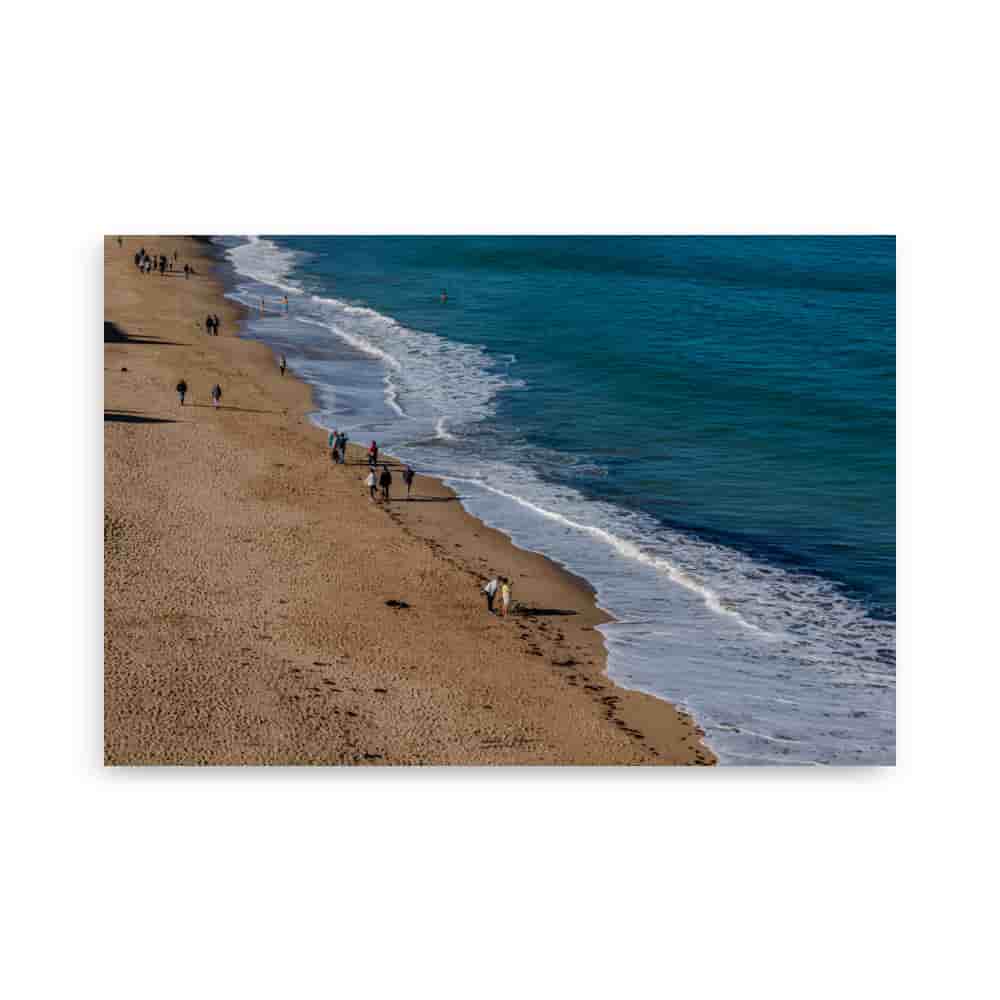

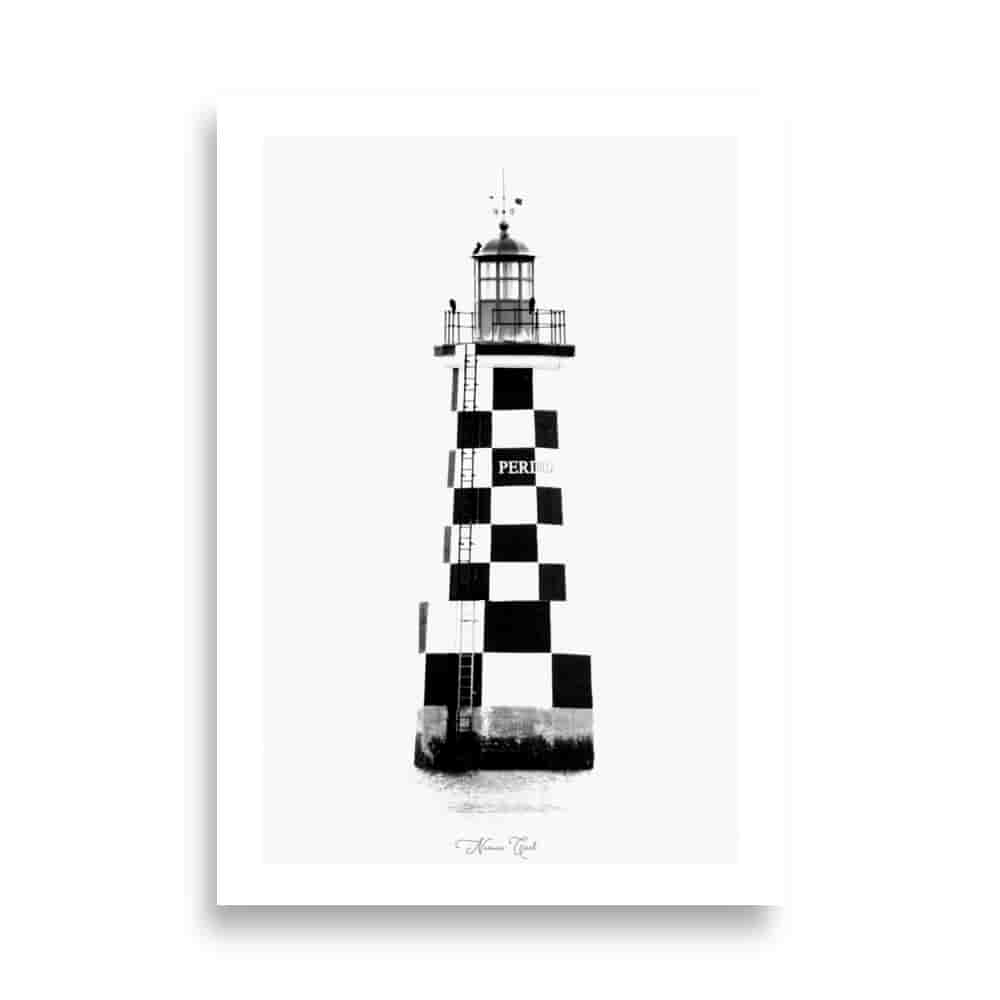
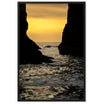






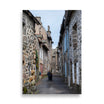




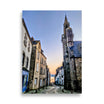













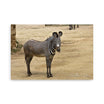


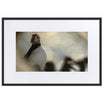



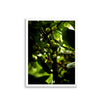


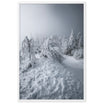



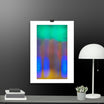




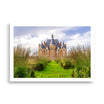








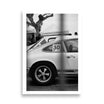
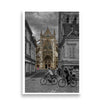








Leave a comment
All comments are moderated before being published.
This site is protected by hCaptcha and the hCaptcha Privacy Policy and Terms of Service apply.